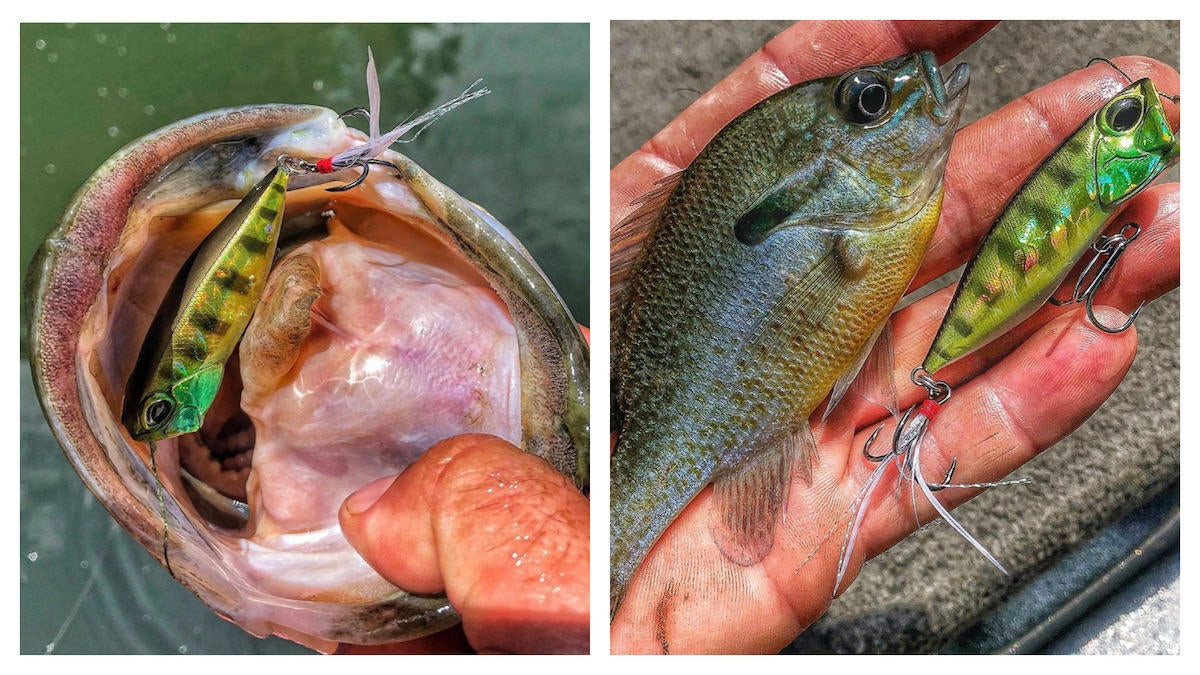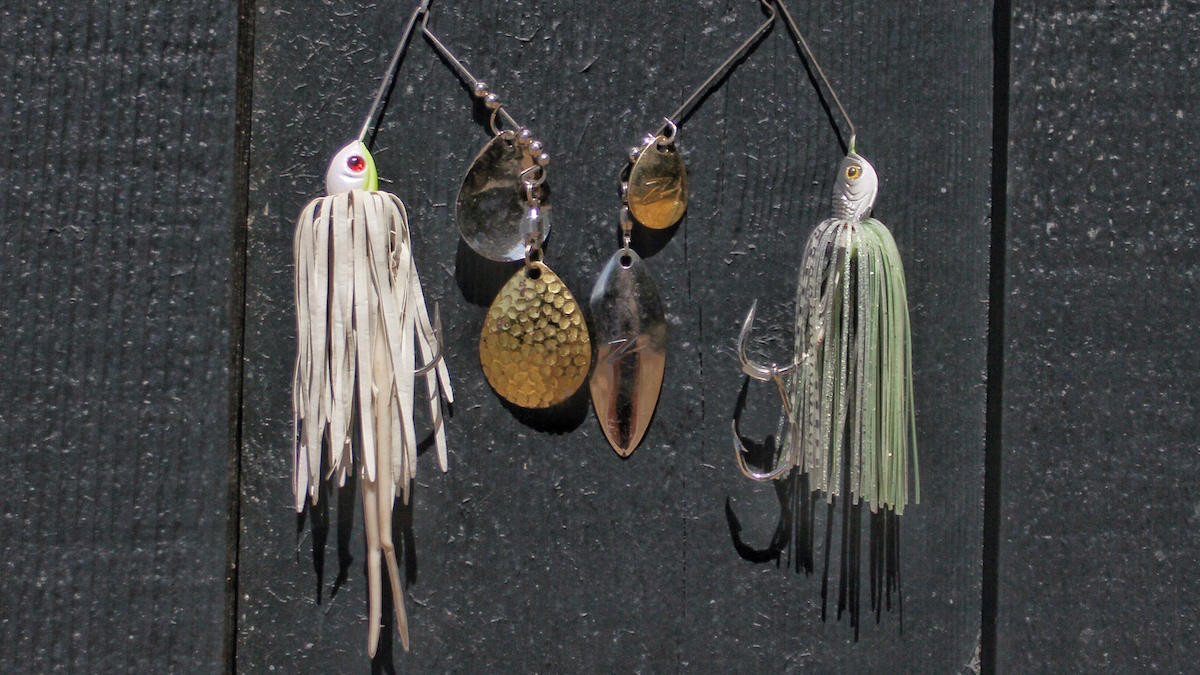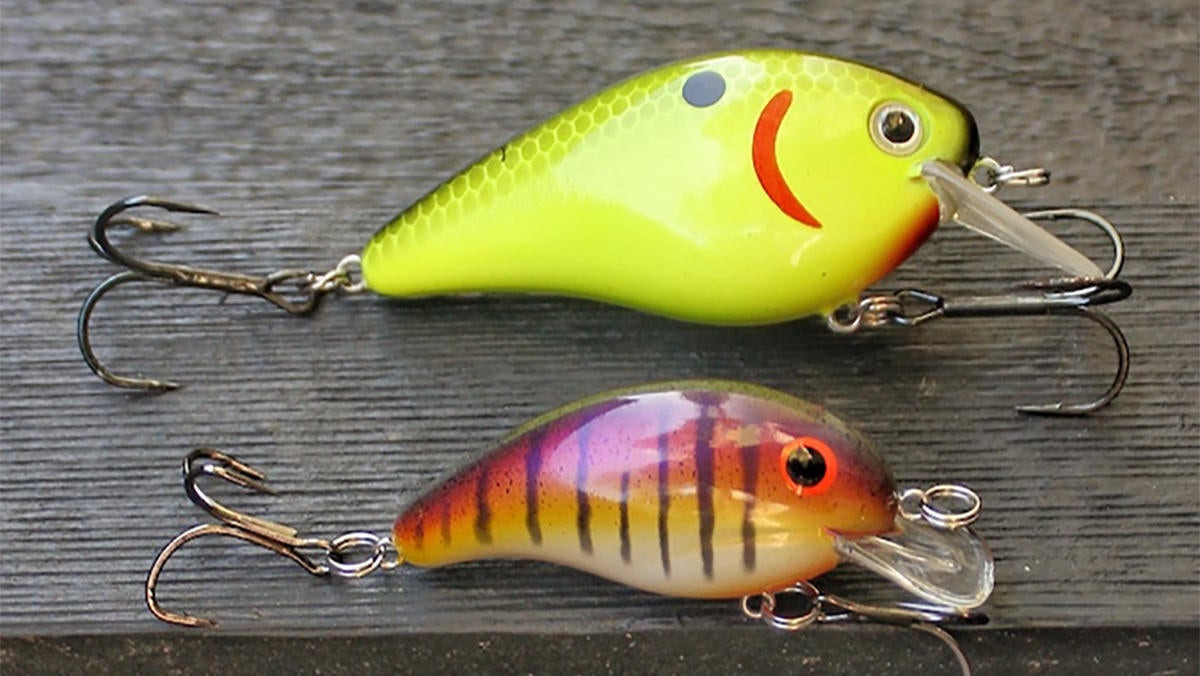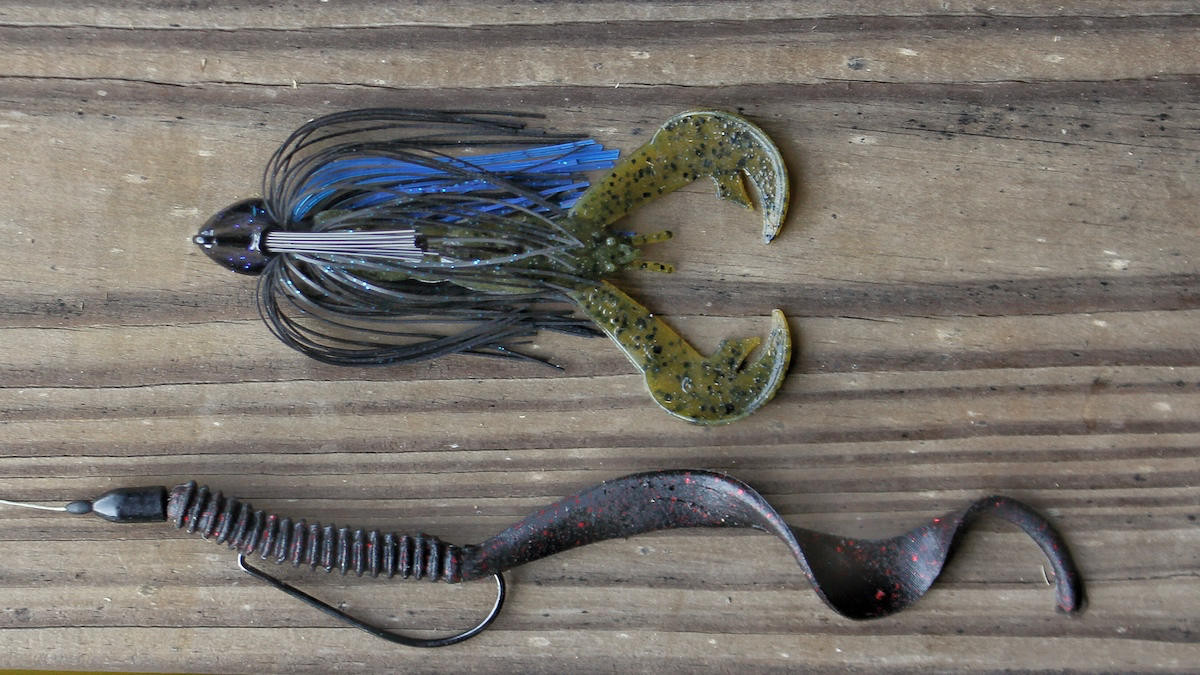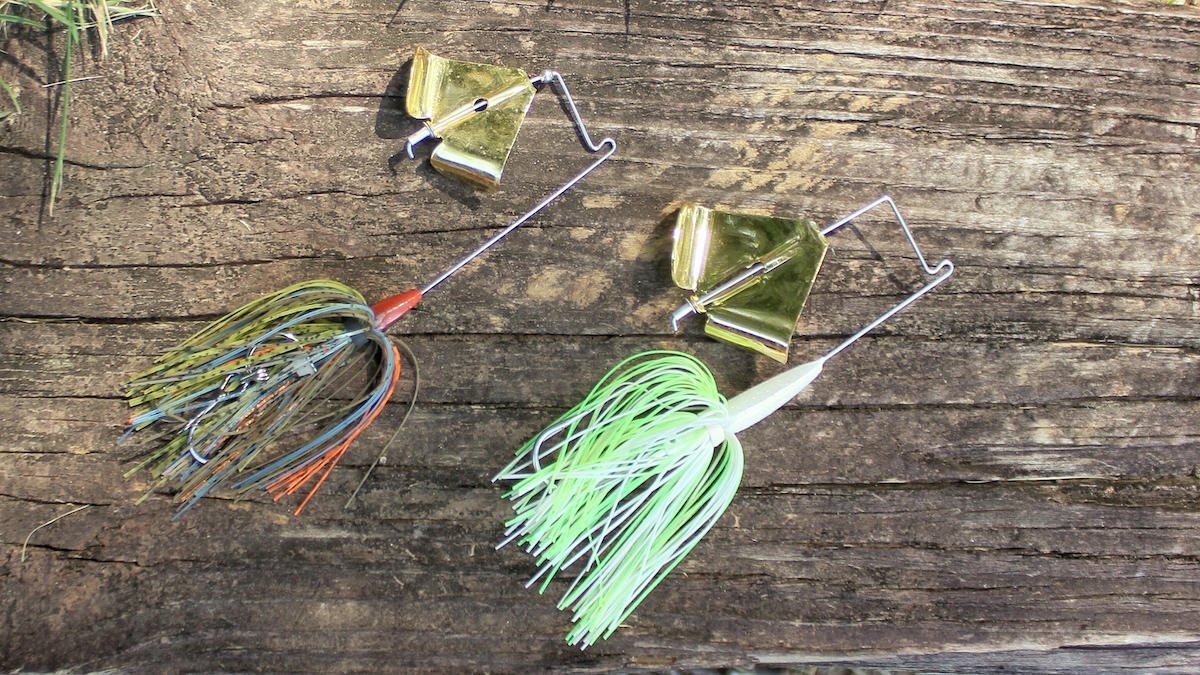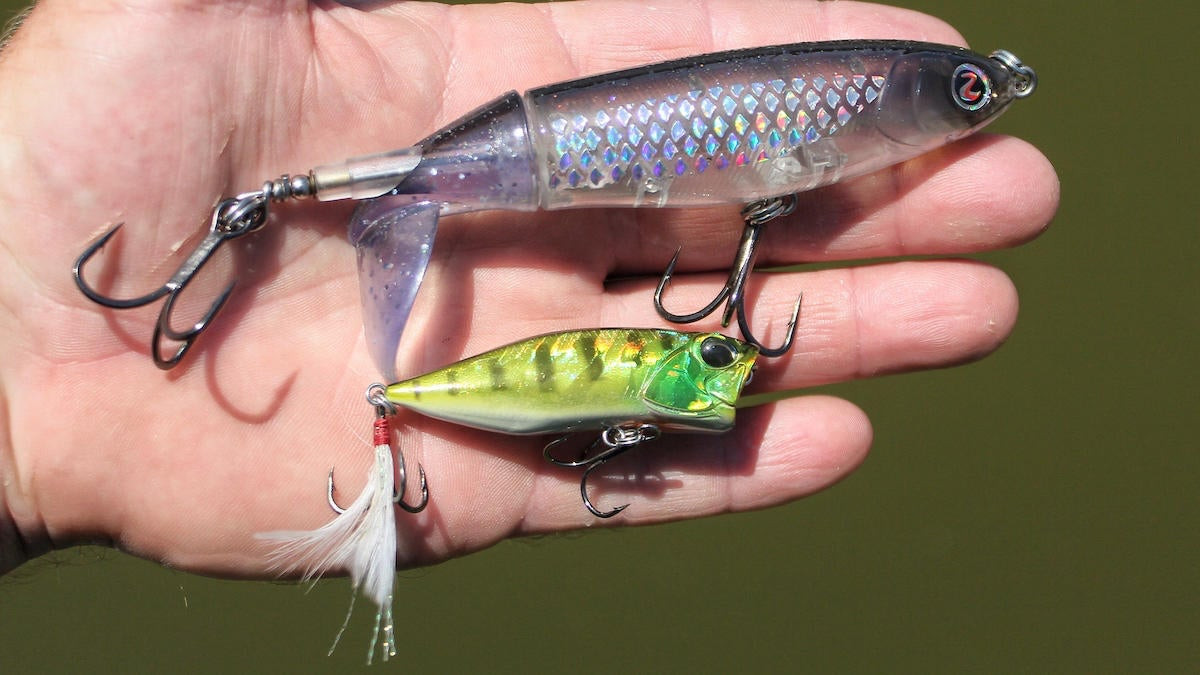I love to power fish. That’s not a particularly surprising statement for anyone that knows anything about me. That’s the way I grew up fishing. That’s the way I fish the majority of the time to this day if I can.
But when you power fish as much as I do throughout the entire year, you notice several little things that need to be done differently at different times. Where a 1/2-ounce, hard-thumping double Colorado blade spinnerbait might be the ticket for luring an aggressive big fish during the prespawn period, a compact 3/8-ounce finesse spinnerbait with a small Colorado and willow leaf combination is needed in the summer.
In both scenarios, you have a fish positioned in muddy water, both in the same creek, by the same log. The difference being a 30-degree swing in water temperature and the lethargy that comes with it. So in this piece we’ll break down some of the the ins and outs of downsized power fishing for hot, shallow-water bass.
Spinnerbait
Since we already started this part of the conversation, we might as well wrap it up. There are a handful of things that differentiate fishing a spinnerbait in the summer months for me from the rest of the year. For starters, speed of retrieve is huge. Now, I still won’t burn a spinnerbait back in the summer when I’m fishing shallow, typically because I’m in relatively stained to muddy water. But I certainly don’t slow-roll it either like I start to do when the water dips below 56 degrees.
Instead, I’ll just keep the bait coming back at a pretty neutral speed. When I’m talking about fishing shallow, I’m talking 5 feet or less. So I’ll just reel the bait where it stays about 2 feet off the bottom and effectively fish the whole water column. And I don’t put a ton of action into the bait like I do in the prespawn for instance. I’ll constantly be pumping my rod tip in the spring to make my spinnerbait pause and flare and thump a little more sporadically. But in the summer, I just want the bait to sail along smoothly for the most part with a little twitch or pause every 5 feet or so just incase a fish is trailing the bait.
As stated in the intro, the size of the bait and blades as well as the blade combination all experience an overhaul for summertime shallow water fishing. But I also like something with a thinner skirt as well and I’ll often pick colors that mimic bream or bluegill in the summer where I’ll use shad patterns in the spring. That directly correlates to which forage is the most available shallow in each season.
Squarebill
I still like to fish a squarebill shallow in the summer months, but you won’t see me tossing around a 2.5 or anything big like that. I primarily focus on something on the smaller end of the spectrum. The Bandit 100, for instance, is a nice-sized subtle squarebill that comes through wood really well and is a bait that my dad has fished for decades now and we’ve both developed a lot of confidence in.
The Bandit 100 comes in at 2 inches where most squarebills in that size and depth class are 2 1/4 inches or even 2 and 1/2 inches. A 1/4-inch and 1/2-inch don’t sound like much of a difference, but with a bait this size you’re talking about reducing its profile by up to 20 percent. And believe me, that’s a noticeable difference. I have tinkered around with a lot of squarebills over the last 15 to 20 years in the boat with my dad while he has kept the Bandit 100 glued to his hand. I have found a few baits that I can keep up with him on like the new Bill Lewis SB-57, but by and large the Bandit 100 outperforms most others, especially in the hot summer months.
Part of it is the size and part of it is the action. The Bandit 100 doesn’t have as exaggerated of an action as a lot of crankbaits. With a slightly rounded lip and rounded body, there’s less of a sharp corner to its lip and you don’t have the flat sides that really throw a lot of water. All of that paired with its reduced size make it a more subtle lure that will still deflect off cover about half as far, leading to more bites from less aggressive fish.
Texas-rigged worm
In the heat of the summer, I’ll usually put down the flipping jig and creature-style flipping baits and opt for something more streamline-an 8-inch Zoom Dead Ringer to be exact. This is a staple in the summer for me. My dad and I have fished a little Wednesday night tournament together almost every week in the summertime since I was about 8 years old. The fishing there is tough in the summertime and keepers come at a premium.
This worm rigged on a lightweight Texas rig is something I was able use to contribute to the cause at an early age and something we still have in one of our hands almost constantly in the summer, both day and night. Most evenings in a 4-hour tournament where we get a little daylight and a little darkness, several of our bites come on this exact bait. And most nights on that lake, if you can catch a 4-pounder and 4 of any size to go with it, you’ll win.
Shallow-water fishing in the summertime can be a grind and is really the only time I’ll slow down to the point of dragging a big worm like this. But something about the slow, smooth action of that ribbon tail just makes fish bite.
Buzzbait
A buzzbait is another great bait when power fishing shallow but one that also fluctuates in size throughout the year for me. Where I’ll throw a 3/8- or even a 1/2-ounce buzzbait with a larger prop in the spring, I’ll back down to a 1/4-ounce buzzbait in the summer with a smaller blade.
This, again, all comes back to the idea of presenting something less intimidating to a lazy bass. They don’t want to exert a lot of energy when the water is in the 80s and especially the 90s; the same wat they don’t in the 40s and low 50s. Bass are cold blooded creatures so their disposition is determined primarily by their environment.
When the water is in the mid 50s to the mid-70 range, you’ll see them be a lot more active and aggressive. They’ll chase and trail big baits much farther than they will when the water temps are at either extreme. You’ll still have some massive explosions on a buzzbait and even a big one from time to time in the summer, but those are rare. Typically the fish, even big ones, will just gently suck the bait down.
Backing down to a smaller buzzbait and again focusing on a color choice that matches the primary forage of bream and bluegill is the key to getting more bites on top in the summer.
Topwater popper
I’ll also reduce the size of my other topwater offerings once the water gets particularly hot. Small poppers, I’ve found over the years, are far more productive than big walking-style topwaters or even the big reeling baits that have gained a lot of popularity as of late. Again, picking a bait that matches the forage is key and the abundance of bream and bluegill shallow make color selection easy.
Another thing that makes a popper good this time of year comes again by way of forage, but this time for the bait fish. Mayfly and cicada hatches happen throughout much of the country in the summertime and lead to all out feeding frenzies along the surface. A popper in the right color perfectly mimics a bait fish feasting away, unaware of what lies beneath.
Downsizing should be your main focus if you’re wanting to try your hand at power fishing shallow water in the summer. Use baits that have a smaller physical profile and create a smaller sound signature or vibration. You’re typically not going to be able to get a fish to travel far to find your bait, so lures with a lot of pull to them aren’t as effective as they are other times of the year.
Instead you want to fish something smaller and more subtle, that won’t intimidate the fish when you reel it right by its nose. Which is what you’ll often have to do to get bit in the summertime shallow. But that doesn’t mean you have to pickup a shaky head. Just take a step down from your traditional power-fishing baits and you’ll soon see an uptick in your output.


